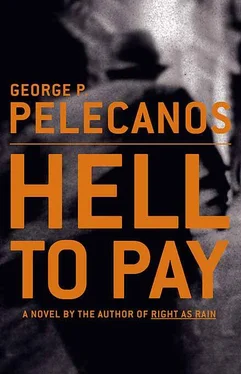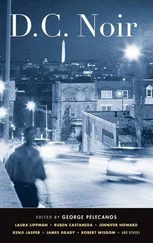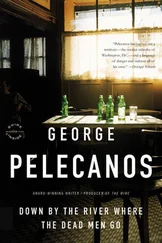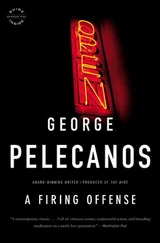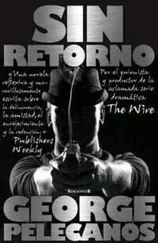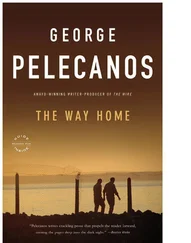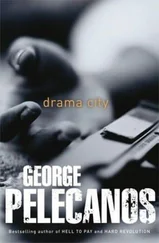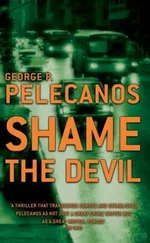“All kinds of young drug boys here,” said Strange. “Question is, why?”
“No idea.”
“Joe wasn’t even close to being in the life. I know his mother, and she’s straight.”
“You see that car she got out of?”
Strange had seen it. It was a three-series BMW, late model, the middle of the line.
“I saw it.”
“She’s got, what, a thirty-five-thousand-dollar car and she’s living in government-assisted housing?”
“Could be a friend’s car,” said Strange.
“Could be.”
“Something to think about. But this ain’t the time or the place.”
They got out of the car. Lamar and Lionel joined Quinn, Arrington, and the boys from the team. They walked as a group to the gravesite. Strange and Blue walked behind.
“You okay?” said Blue.
“Yeah,” said Strange. But to Blue’s eyes his friend looked blown apart, both depleted and seething inside.
“I’m on midnights tonight,” said Blue. “Was gonna take a car out. Was wonderin’ if you wanted to do a ride-along.”
“I do,” said Strange.
“Just thought I’d see what’s out there.”
“I’ll be there.”
“Meet me at the station at around eleven-thirty. You’re gonna need to sign some papers.”
“Right,” said Strange.
Dennis Arrington had asked the group to form a circle. He took the hand of Quinn, who was standing beside him, and the rest of the boys joined hands until the unbroken circle went back to Arrington. They all bowed their heads, and the young deacon led Quinn and the boys in a quiet prayer. Nearby, Strange and Blue also lowered their heads and prayed.
When Strange was done he looked over to the grave site and saw Joe’s mother, Sandra, talking to a young man with closely cropped hair, immaculately dressed in a three-button suit. The young man looked over at Strange as Sandra Wilder talked. He kept his eyes on Strange and said something to the well-dressed young man beside him. His friend nodded. These two young men, Strange decided, were also in the life.
“Let’s go, Derek,” said Blue. “Looks like they’re about ready to say the final words.”
Blue and Strange walked to the site. Fifteen minutes later, Joe Wilder, eight years old, was lowered into his grave.
STRANGE woke from a nap at about ten o’clock that night, showered and changed, fed Greco, and locked the house. He had called Janine before he left, telling her that he would be out most of the night and would probably not be back in the office until the following afternoon. He had not spent the night at Janine’s place that week.
Strange drove north toward the Fourth District station house at Georgia, between Quackenbos and Peabody. Lydell Blue had already filled him in on the developments of the Wilder case. In the three days that had elapsed since the murders, much had been learned.
The ice-cream shop, called Ulmer’s, carried two employees in the fall and winter seasons, a young Salvadoran named Diego Juarez and the owner, Ed Ulmer, African American and fifty-nine years old. On the night of the shooting, Juarez was on the clock. His car, a black Nissan Sentra, was the only one in the lot when Lorenze Wilder pulled in and parked his Olds. After serving Wilder and his nephew, Juarez noticed that the boy tried to use the bathroom around the side of the building but quickly returned to the Oldsmobile. Ulmer had padlocked the bathroom doors after several incidents of vandalism.
Shortly after the boy got into the Olds, joining the older man, a white Plymouth, stripped down like an old police vehicle, came into the parking lot at a high rate of speed. Driven by a young black man with “a long nose, like a beak,” the Plymouth stopped in front of the Olds, blocking its forward path. Juarez stated that the “rap music” coming from the open windows of the car was quite loud. Very quickly, two young black men got out of the car, one from the passenger seat and one from the backseat, drew handguns, and began firing into the windshield of the Olds.
Diego Juarez mentally recorded the sequence of letters and numbers on the D.C. license plate of the Plymouth before retreating into the back of the shop. At this point, he phoned the police and then locked himself in the employee bathroom until he heard the squad cars arrive, five minutes later. He had nothing to write with in the bathroom, and in his nervous excitement he had forgotten one of the license plate’s two letters and most of its numerals. When he came out of the bathroom, he could recall none of the numerals. By then, of course, the shooters were gone.
One of the shooters, apparently, had vomited a mixture of alcohol and hamburger meat on the asphalt of the parking lot before he’d gotten back into the Plymouth.
Both victims had been shot several times. Lorenze Wilder had been shot in the back as well as the face and neck, indicating that he had initially tried to protect the boy. This was before the force of the bullets had spun him around. Joe Wilder had taken five bullets, one in the groin area, two in the stomach and chest, and two in the face and head. Both victims, lying in melted ice cream and blood, were dead when the police arrived. A rubber action figure, also covered in blood, was found near the boy’s hand. A football helmet with a mouthguard wedged in its cage was found at his feet.
Ten 9mm casings were found in the lot consistent with those that would be ejected from an automatic weapon. Their ejection pattern suggested that they came from the gun of the shooter on the right, described by Juarez as the one with “the braids in his hair.” There were no casings found from the gun of the second shooter. Either he had picked them up, highly unlikely, or they had remained in the chambers of his gun. If the latter was the case, the weapon he used was a revolver. Indeed, the slugs that had done the most damage to the bodies would later be identified as hollow-points fired from a.357.
Juarez described the second shooter as “a tall and skinny black” with light skin and a skully. Juarez said that the shooter was smiling as he fired his weapon, and it was this smile that had persuaded him, Juarez, to retreat into the back of the shop. He had since worked extensively with police artists to come up with drawings that would closely resemble his brief recollection of the faces on the young men he had seen.
There were no other witnesses to the shooting, and none of the occupants of the nearby residences claimed to have seen a thing.
The white Plymouth was found the next morning on a rural stretch of road bordering a forest in Prince George’s County. The car had been doused in gasoline and burned. The smoke rising above the trees had been seen by a resident of a community situated on the other side of the woods, which had prompted him to call the police. The first letter of the license plate matched the letter recalled by Juarez. This was the shooters’ car. The arson job had been thorough, obliterating any evidence save for some clothing fibers; the automobile had been wiped clean of prints.
The Plymouth was registered to a Maurice Willis of the 4800 block of Kane Place in the Deanwood section of Northeast. Squad cars and homicide detectives were dispatched to his address, where Willis was taken in without resistance for questioning. The Plymouth belonged to Willis. It had been stolen from the Union Station parking lot while he was attending a movie at the AMC. He had not reported the theft, he explained candidly, because he had been driving the car without insurance. Based on his recollection of the movie he had seen and his certainty of its time, the detectives were able to pinpoint a two-hour window for the theft.
By the end of this next day, the surveillance tapes from the pay booth at the parking garage had produced a photographic record of the one who had stolen the Plymouth. The image was of a light-skinned young black man wearing a sheer black skullcap and shades. On top of these visual obstacles, the suspect had deliberately kept his face partially turned away from the camera while he paid the parking fee. The camera evidence wouldn’t find them the shooter, but it would be useful in court.
Читать дальше
